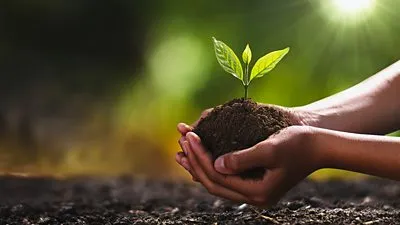“When the last tree dies, the last man dies.” This saying is one of the most popular in Ghanaian society; however, its meaning is rarely put into consideration. Trees can be termed one of the life-dependents of man, and without trees it is doubtful that man would be able to survive even for a second in the environment. And therefore to prevent this quote from manifesting in our current dispensation, and to contribute in the global efforts to fight climate change, government through the Ministry of Lands and Natural Resources has initiated the Green Ghana Day in 2021 as an aggressive afforestation/reafforestation programme geared toward planting trees to restore Ghana’s lost forest cover.
In its first year of implementation, Green Ghana Day saw the planting of 7 million tree seedlings from an initial target of 5 million with the objective to: Create Enhanced National Awareness of The Necessity for Collective Action Toward Restoration of Degraded Landscapes in the Country; Inculcate the Value of Planting and Nurturing Trees and its Associated Benefits in the Youth; Mitigate Climate Change; Enhance Livelihoods for Rural Communities Through Their Engagement in the Production of Tree Seedlings; and to Beautify Our Communities and Environment. Some of the tree seedlings planted during the 2021 planting exercise included royal palm, coconut, pawpaw and assorted types of ornamental plants.
Premised on the first edition’s success, the 2022 edition of Green Ghana day was launched on 1st March 2022 by the President of the Republic under the theme ‘Mobilising for a Greener Future’ with an ambitious target of 20 million tree seedlings to be planted. With knowledge that the 20 million seedlings target would need more hands and a lot of effort to pull off, the ministry employed a two-pronged strategy to execute it.
The first strategy was to plant 10 million trees in degraded Forest Reserve compartments across the country. Various organisations were given a chance to adopt some of these compartments in degraded lands, and brand in their name after planting. The second strategy saw the planting of another 10 million tree seedlings within farms and around farm boundaries, along degraded watershed areas and within communities, in road medians and avenues, on compounds of homes, schools, churches and offices, and within recreational grounds.
Also, in efforts to meet the ambitious target of 20 million, the tree seedlings were fairly distributed based on the sizes and capacity of the various regions in Ghana.
Ahafo 1,000,000
Ashanti 3, 500,000
Bono 1, 000,000
Bono East 1,200,000
Central 1,500,000
Eastern 2,000,000
Greater Accra 2,500,000
North East 500,000
Northern 1,000,000
Oti 600,000
Savannah 1,000,000
Upper East 600,000
Upper West 600,000
Volta 500,000
Western 1,000,000
Western North 1,500,000
On the day of the planting – June 10, 2022 – President Nana Addo Dankwa Akufo-Addo led the country to set the ball rolling for the series of plantings which took place in Accra and all other regions nationwide.
At the end of the planting programme, a survey put together by the Forestry Commission – an agency under the Ministry of Lands and Natural Resources – estimated that a total of 26 million seedlings had been distributed nationwide, which well-exceeds the initial 20 million target. The survey noted that among the 16 regions, the Ashanti, Ahafo, Bono, Bono East, Eastern and Greater Accra Regions exceeded their targets, while the Northern, North East and Oti Region are yet to meet their targets due to low rainfall in those regions.
From the 50 percent purported to be planted in the forest reserve, 40.2 percent is said to have been planted; and the other 50 percent for homes and other locations have seen 49.8 percent of work done. An analysis based on the most requested seedlings also showed that tree seedlings like Teak, Ofram, Cidrella, Acacia and Mahoghany were the most sought-after during the planting, not forgetting fruit and timber species.
In a bid to practicalise one of the Green Ghana Day’s main objectives – which is to inculcate the values of planting and nurturing trees and its associated benefits in the youth – the 2022 edition introduced the ‘One Student, One Tree’ initiative that was launched at the Aggrey Memorial Senior High School in the Central Region, with other second cycle schools of the region in attendance.
As the good book admonishes, show the child the path he should follow and when he grows he will not depart from it. With this initiative as an annual exercise, it is the hope of government that these young ones will not depart from this valuable practice inculcated in them, but rather go a long way to keep trees growing on our land for our very lives and those of generations to come.
The time has therefore come for all Ghanaians to as a matter of necessity rally behind government, the ministry and other partners to continuously make the Green Ghana Project a resounding success, all in an effort to also help mitigate the impact of climate change and promote a much greener world for human survival – as stipulated by the Sustainable Development Goal 16 (SDG-16), which says ‘Protect, Restore and Promote Sustainable Use of Terrestrial ecosystems, Sustainably Manage Forests, Combat Desertification, Halt and Reverse Land Degradation; and Halt Biodiversity Loss’.
>>>the writer is Assistant Public Relations Officer at the Ministry of Lands and Natural Resources










